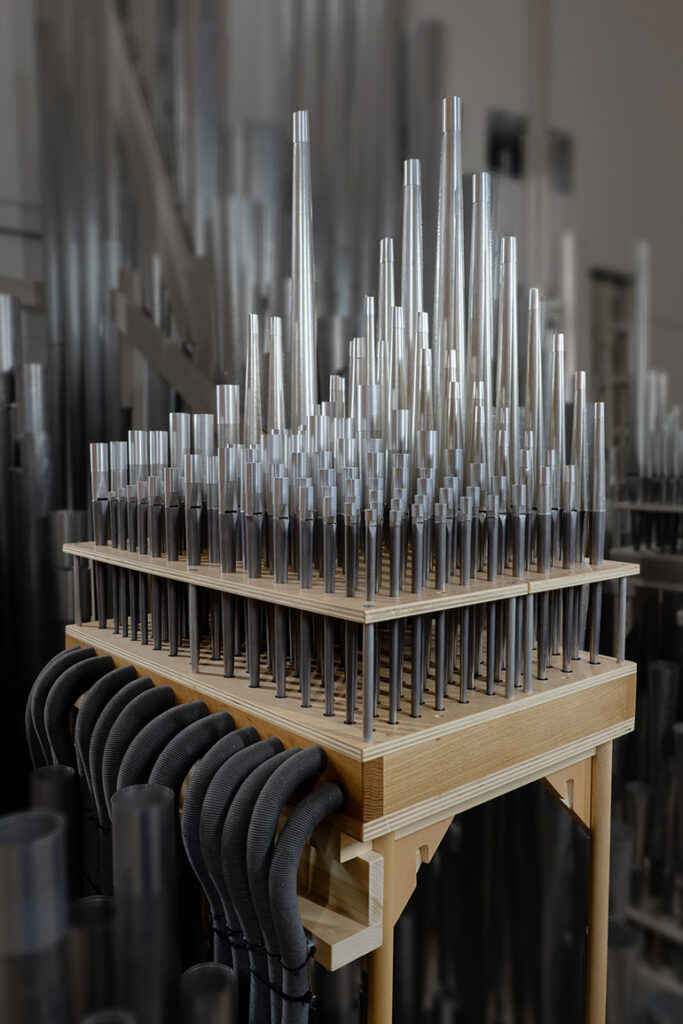Process
Request for Information
Your pipe organ project may begin with questions: When could a new organ be delivered? What might the costs be? Have we built successful instruments in venues similar to yours? How would we work together?
Naturally cost is a primary concern. At this time a rough estimate may be possible but before actual budgets or fundraising goals are set a more complete assessment of your requirements and circumstances will be necessary.
Perhaps you don’t feel you have sufficient understanding of the instrument to navigate these important decisions. Your church or organization may wish to engage a consultant to help assess your needs and goals and identify the firms most able to realize them. We are ready to work with you directly or through your consultant.
If you are considering builders for a new organ or just wondering where to begin, we are always happy to talk. When you call the Fisk workshop you will be speaking with the very people who build the instruments. It is our pleasure to help make your vision a reality. We hope you will give us the opportunity to do our best work for you.
Resource:

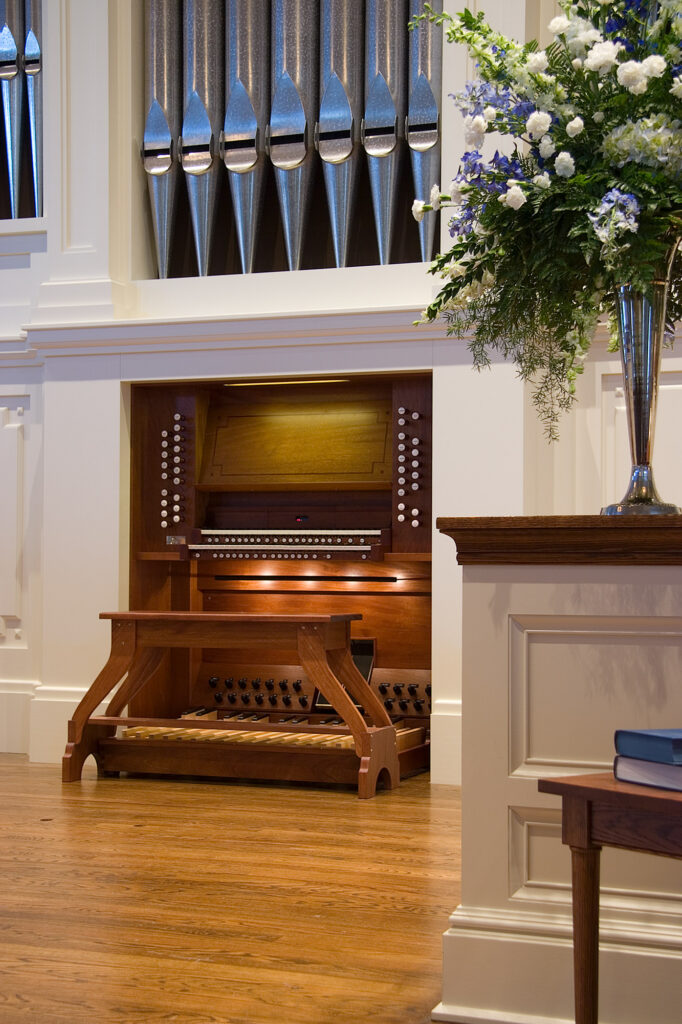
Visit a Fisk
There is no better way to refine your vision for a new Fisk than to see, hear or play one. You will find our instruments in many locations across the U.S. and several overseas. We would be happy to put you in touch with clients whose instruments are similar to what you are envisioning and help to arrange a visit. Our clients are in the best position to offer an unbiased view of what it is like to work with us, how their project unfolded, and the results of our efforts.
If you are able, we invite you to visit our workshop in Gloucester, MA, meet our team and see what we are working on. There are several landmark Fisk organs close by that we would be pleased to show you.

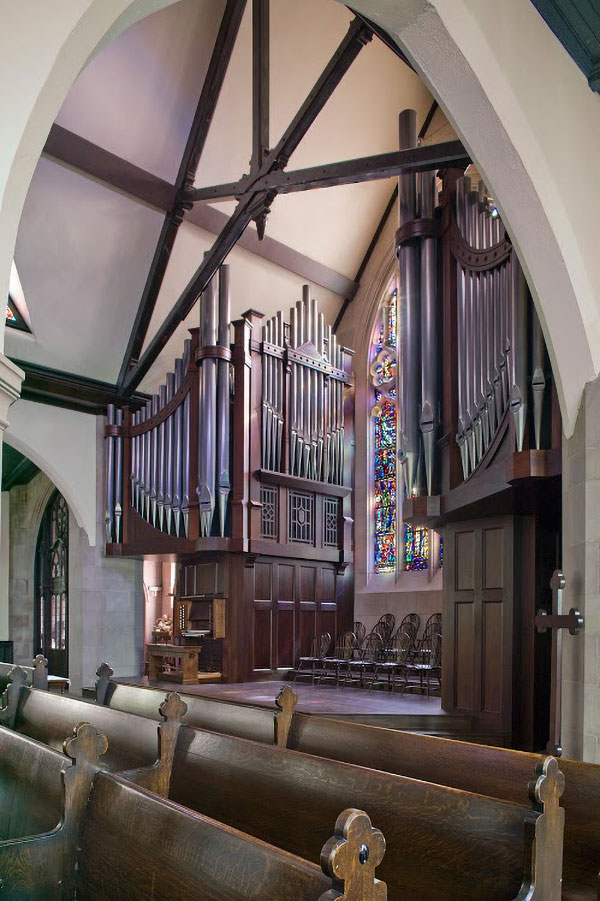
Proposal and Contract
Our discussions progress as we ask and answer important questions from each other. We’ll want to know the size and uses of your facility. How many people does it seat, its rough dimensions, are architectural drawings available, what kinds of repertoire are most often played, and much more. It is often advisable to schedule a site visit so we can see your venue and discuss the possibilities in greater detail.
When we have come to a thorough understanding of your requirements and wishes we can present a formal proposal. This will include a stop list and the rationale behind it, a design concept sketch, a sample contract, costs and other terms and conditions. The proposal is our best suggestion for your particular needs.
While it is detailed, our proposal is not the final word. It may well stimulate deeper discussion, illuminate challenges, and clarify what work remains to be done. Every organ specification is a balance of wishes and means and every Fisk is unique. We expect and welcome further conversation.
When we come to complete consensus, a clear and concise contract can be signed with confidence.

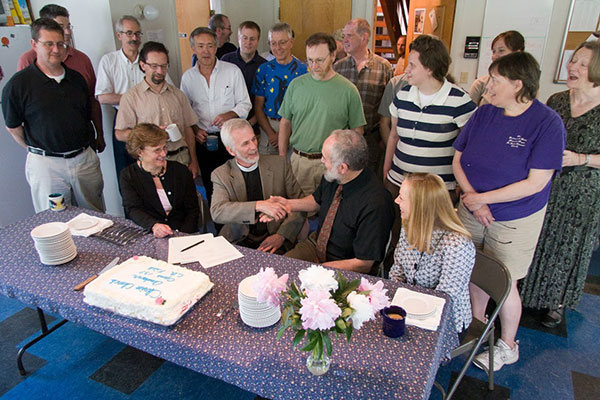
Design
When design work begins on your project, the first step is a site visit from a senior designer, often the Project Manager. Extensive measurements and photographs are made of your existing building, or studies made of the drawings for buildings under construction. A highly detailed 1:16 scale model is then constructed of the area of the building where the organ will go. We have made use of this method of design since the founding of the company and continue to use it in conjunction with modern digital drafting tools. This dual method gives us the opportunity to experience your room as if we were actually in it, to pick up nuances of the shape and details of the space, and to relate motifs in the organ design to the architectural motifs of the room.
We seek to create instruments of great beauty that are at home in their surroundings and seem to have always been there. The model also gives us an unparalleled ability to share the design process with you as it moves forward, whether through your visits to the shop or digital photography sent via email.
At the same time as visual design, the internal mechanical and structural design commence as well. Any preparation of the building to accept the new organ is discussed at this time. Topics to explore often include the acoustical environment, electrical service, HVAC systems, and weight bearing capabilities.

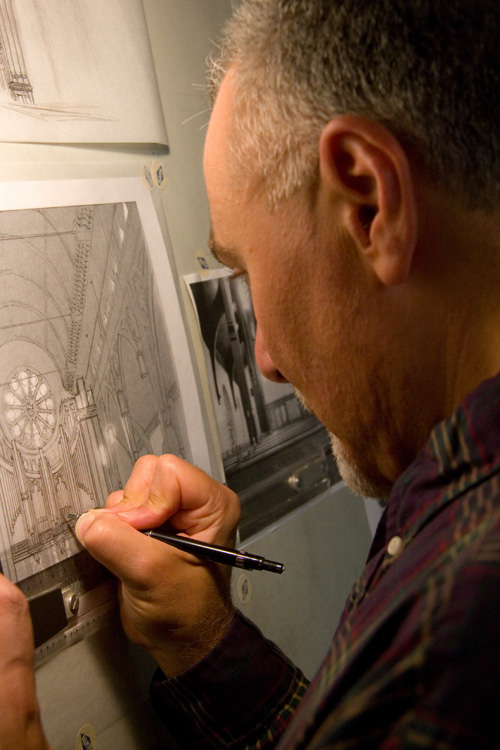
Shop Construction
As the design nears completion, the full shop turns its attention to the project. Shop drawings are prepared either by hand or with AutoCAD, detailing every part. Metal is alloyed and cast in sheets from which pipes are made. Seasoned lumber is purchased in the rough, then planed and sawn to create the casework and myriad interior parts of the organ. Keyboards of bone or exotic woods are constructed. Pipework is shop-voiced to preliminary levels and prepared for final installation. Pieces and sub-assemblies are brought together in our 30′ by 60′ set-up room and the organ is fully assembled and tested. Client visits are welcomed throughout the process, but are especially encouraged at the end when we host an Open Shop.
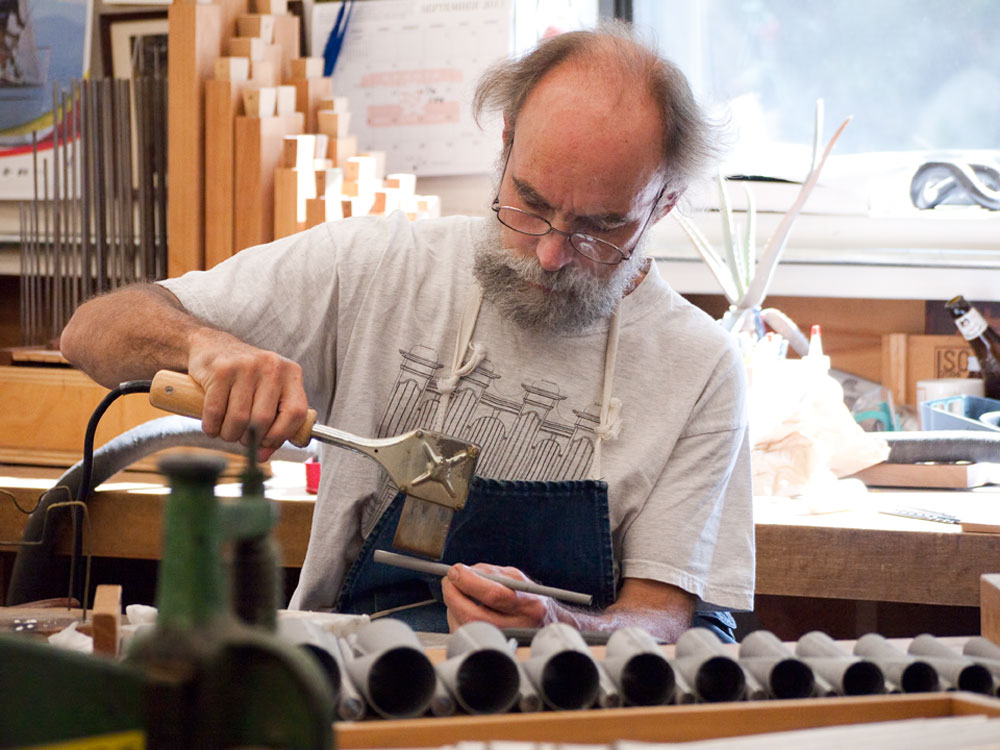
Open Shop
We have an open house to celebrate the end of the construction phase of a project, and to give us a chance to show our work to family, friends, suppliers, and colleagues before it leaves Gloucester. Hundreds of people attend these Saturday afternoon gatherings at which our clients and their friends are the guests of honor. Visitors are encouraged to play the organ, tour the shop, and take part in the celebration. It is a great way to invest donors and friends of the project with a sense of the magnitude of their gifts. After the Open Shop the organ is dismantled and carefully packed in air-ride moving vans for transport and delivery, normally three or four weeks later.
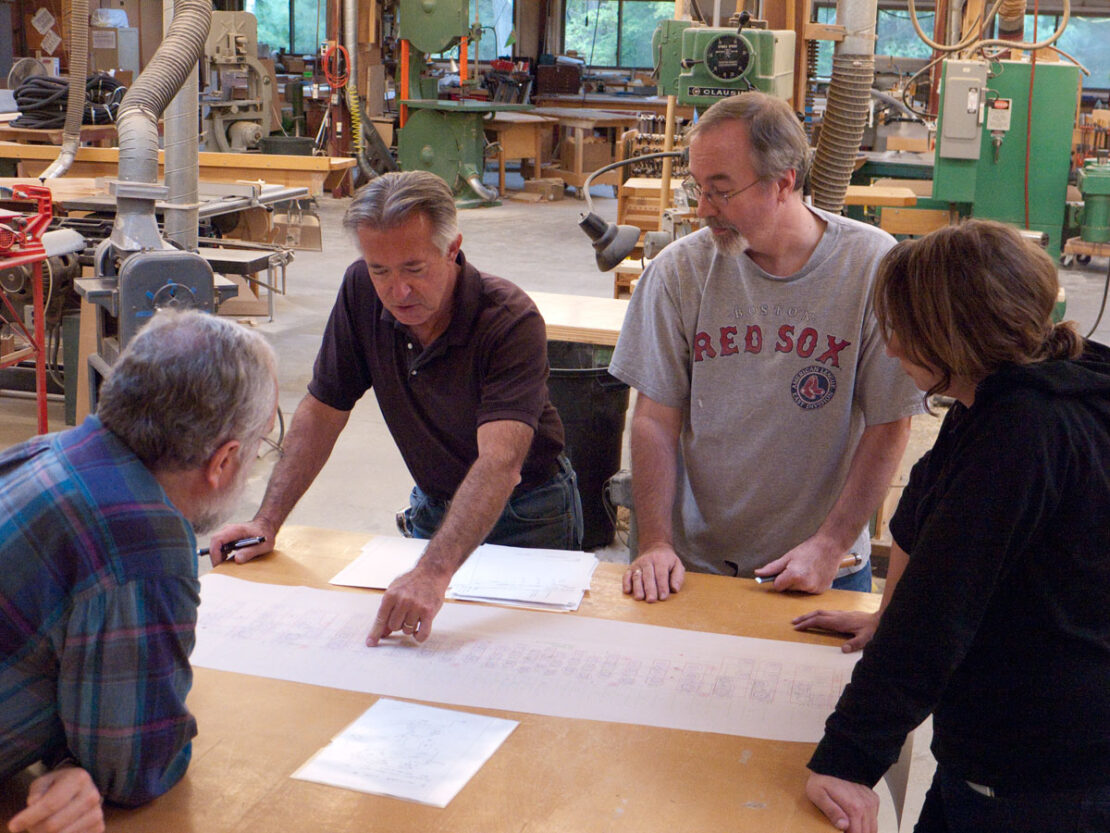
Delivery
The day the organ arrives is also a great opportunity for community building and creating a sense of ownership of the new instrument. At churches, the truck pulls up just after the last service on Sunday, and parishioners are asked to help with the unloading. There are many jobs to be done, even for those of no great strength. Many people have told us that delivery day is an event that brings whole congregations together, and becomes an historic milestone in the life of the church, one that today’s children will tell their grandchildren about, “I helped when the organ was delivered, sixty years ago.”
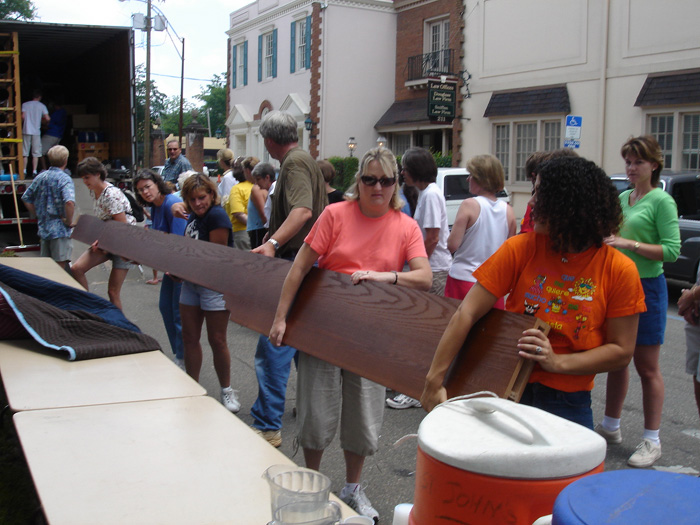
Installation and Voicing
A crew of installation specialists arrives with the organ, typically four or five of the organbuilders who built the organ in the shop. We direct the unloading, then begin re-assembling the organ and fitting it to the building, normally a month of work for a moderate instrument. We like to think of ourselves as artisans-in-residence and we see education as part of our work. We can schedule question and answer sessions to give those interested in the process a chance to learn more about it.
Once the organ is fully assembled, voicers arrive to begin the work of adjusting each pipe to the acoustics of the building, a task that can only be done on site. It is precise and demanding work, carried on by teams of two people in three or four week rotations. Voicing a moderately sized organ can be the work of four or five months.
No organbuilding company spends as much time on installation and voicing as we do. Twenty percent of all the hours in a project happen on your site. This care and artistic precision is a part of what differentiates our company from all others.

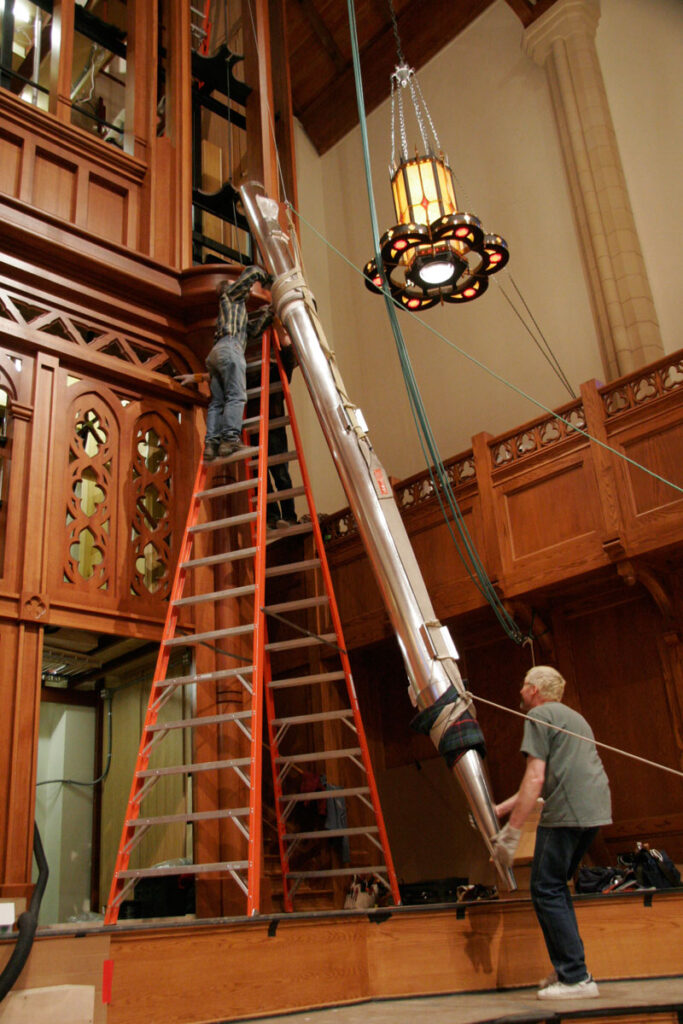
Dedication
When the organ is completed most clients have a concert or series of concerts to celebrate the conclusion of the project and to present the instrument to the wider public. These events often include master classes by visiting recitalists, gala concerts and consecratory services at religious institutions. We have wide experience to offer you in helping to organize these special occasions.

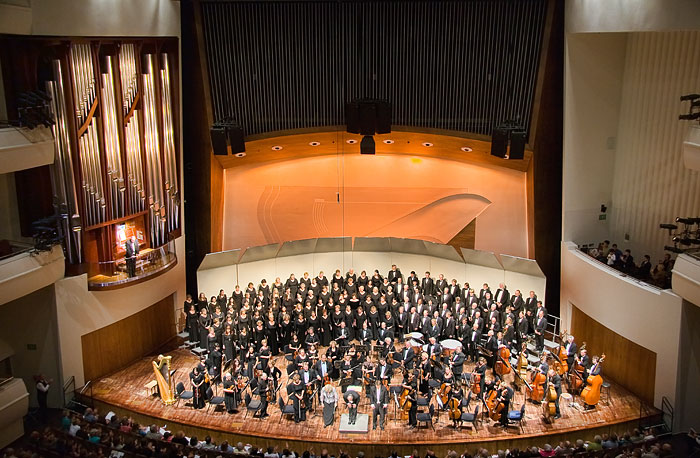
Warranty and Maintenance
We guarantee all our work against defects in materials and workmanship for three years, with longer periods and yearly check-ups available. We service almost all Fisk organs close to our Gloucester workshop, and help arrange for regular maintenance by reputable firms for those outside our service radius. Our website offers ways for all members of the extended Fisk family to stay connected, to post concert information and list recordings. You’ll receive invitations to future open shops and dedications, and the Fisk Owners Group meetings at AGO conventions. We’ll hope to call on you someday to advise future potential clients.

